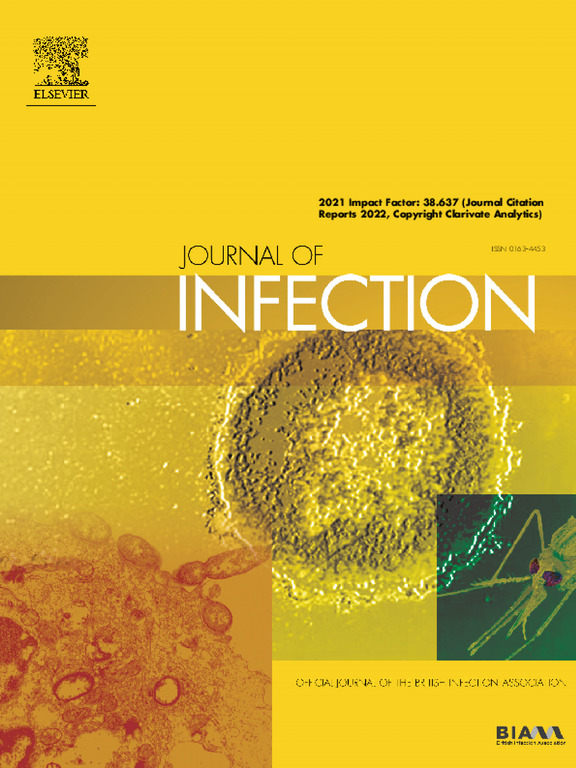Evidence of greater immune aging among untreated HIV slow progressors than antiretroviral-controlled people living with HIV
IF 14.3
1区 医学
Q1 INFECTIOUS DISEASES
引用次数: 0
Abstract
Background
Uncontrolled HIV viremia results in the progression to AIDS, however, this can be stopped with antiretroviral therapy (ART). Slow progressors are rare individuals who can prevent or delay HIV disease progression without ART. It is unknown whether they experience immune aging akin to normal progressors on ART.
Methods
We investigated persons living with HIV (PWH) who were either HIV slow progressors (n = 58), PWH on ART with undetectable HIV viremia (n = 58), or PWH not on ART with detectable viremia (n = 26), and 56 controls without HIV. The groups were well matched for age and sex. A panel of T-cell differentiation and immune aging markers was measured, along with T and B cell subset telomere length, adjusting for major confounders.
Results
Relative to the ART-suppressed HIV group, slow progressors showed immune aging markers indicative of more advanced aging, including lower CD8 naïve:effector memory ratio (standardized effect size −0.41 [95% CI −0.74, −0.07]), and shorter telomere length in B cells (−0.52 [−0.97, −0.07]), CD4 T cells (−0.58 [−0.94, −0.23]), and proliferative CD8 cells (−0.41 [−0.80, −0.01]). Comparison of slow progressors with the control group without HIV showed the same effects. Further, within the slow progressor group, immune aging patterns for the subgroup of elite controllers were not different.
Conclusions
Our findings indicate that despite natural host control of HIV replication, slow progressors show evidence of disproportionately advanced immune aging. This reinforces the potential benefit of ART and emphasizes the need to both diagnose slow progressors and study their potential age-related comorbidities.
未经治疗的艾滋病毒缓慢进展者比抗逆转录病毒控制的艾滋病毒感染者免疫老化的证据
背景:未经控制的HIV病毒血症会导致艾滋病的发展,然而这可以通过抗逆转录病毒治疗(ART)来阻止。进展缓慢者是很少能在没有抗逆转录病毒治疗的情况下预防或延缓艾滋病毒疾病进展的人。目前尚不清楚他们是否会经历类似于抗逆转录病毒治疗正常进展者的免疫衰老。方法:我们调查了艾滋病毒感染者(PWH),包括艾滋病毒缓慢进展者(n=58),接受抗逆转录病毒治疗但无法检测到艾滋病毒血症的PWH (n=58),未接受抗逆转录病毒治疗但可检测到病毒血症的PWH (n=56)和56名未感染艾滋病毒的对照组。这些小组在年龄和性别上都很匹配。测量了一组T细胞分化和免疫衰老标志物,以及T和B细胞亚群端粒长度,调整了主要混杂因素。结果:相对于art抑制的HIV组,缓慢进展者显示出更晚期衰老的免疫衰老标志物,包括CD8 naïve:效应记忆比(标准化效应大小-0.41 [95% CI -0.74,-0.07])较低,B细胞端粒长度较短(-0.52 [-0.97,-0.07]),CD4 T细胞(-0.58[-0.94,-0.23])和增殖性CD8细胞(-0.41[-0.80,-0.01])。将缓慢进展者与未感染艾滋病毒的对照组进行比较,也显示出同样的效果。此外,在缓慢进展组中,精英控制者亚组的免疫衰老模式并没有不同。结论:我们的研究结果表明,尽管自然宿主控制HIV复制,但缓慢进展者显示出不成比例的晚期免疫衰老。这加强了抗逆转录病毒治疗的潜在益处,并强调了诊断缓慢进展者和研究其潜在的年龄相关合并症的必要性。
本文章由计算机程序翻译,如有差异,请以英文原文为准。
求助全文
约1分钟内获得全文
求助全文
来源期刊

Journal of Infection
医学-传染病学
CiteScore
45.90
自引率
3.20%
发文量
475
审稿时长
16 days
期刊介绍:
The Journal of Infection publishes original papers on all aspects of infection - clinical, microbiological and epidemiological. The Journal seeks to bring together knowledge from all specialties involved in infection research and clinical practice, and present the best work in the ever-changing field of infection.
Each issue brings you Editorials that describe current or controversial topics of interest, high quality Reviews to keep you in touch with the latest developments in specific fields of interest, an Epidemiology section reporting studies in the hospital and the general community, and a lively correspondence section.
 求助内容:
求助内容: 应助结果提醒方式:
应助结果提醒方式:


